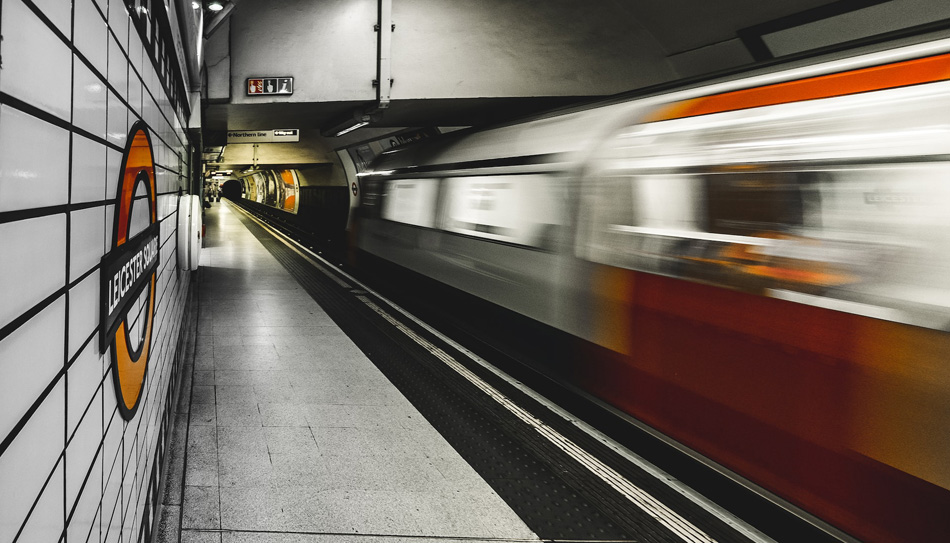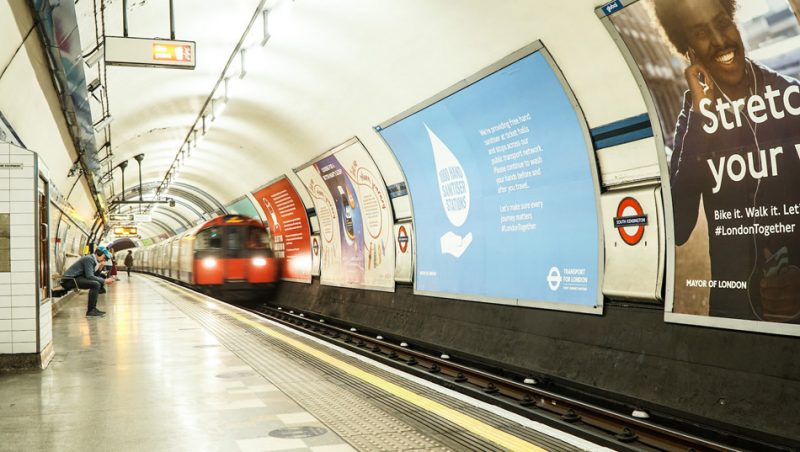The London Underground, popularly called the ‘Tube’, has historical significance apart from being a convenient mode of transport, and having an extensive network connecting no less than 270 stations over 408 kilometers of track across the city. The Tube serves Greater London and some parts of neighboring counties like Buckinghamshire, Essex, and Hertfordshire in England. The Underground assumes the funny nickname – Tube – owing to the ‘tube-like’ shape of most of the tunnels.
The trains run at an average speed of 20.5 miles/hour. On the Metropolitan line (Met) between Aldgate in the City Of London and Amersham and Chesham in Buckinghamshire, the trains can also run up to a speed of 60 mph. The shortest distance covered by the Underground is estimated to be 260 meters, and the longest is 6.3 kilometers. The busiest Tube station is Waterloo with a heavy footfall.
Though it is called the Underground, ironically 55% of it lies above the ground. Interestingly enough, some 50 of the Tube stations have been abandoned and are called the ‘ghost stations’. Reasons cited are many — incomplete projects that never saw the light of day; stations that could not handle surging crowds; not working to full potential, etc. Many of these have been given a new lease of life and got replaced as something else, while most others continue to be just that — ‘ghost stations’.
The Tube is operational between 5:30 am till midnight, Mondays through Thursdays. It extends its hour by 1 hour as the week draws to a close — Fridays and Saturdays— till 1 am. Sundays are more relaxed — it opens at 6:30 am and shuts earlier than other days, i.e. at 11:30 pm. The rush hours are in the morning, between 8 am and 10 am, and in the evening between 5 pm to 7 pm. Those are also the times when the fares are more expensive.
The first step to get around the city on the Tube is to buy a ticket — not the paper tickets (because they offer one-way routes and cost a whole lot more than they are worth). Instead, go for Oyster cards; these are their stored-value cards that can be bought at any Tube station. Alternatively, you can avail of the daily/weekly travel Passes, depending how frequently you will avail of the Tube service and which zones you would be traveling during your stay in London.
The entire list of the London Underground Lines are — the Bakerloo line, the Central line, the Circle line, the District line, the DLR line, Hammersmith and City line, Jubilee line, the Metropolitan line, the Northern line, the Piccadilly line, the Victoria line, the Waterloo and City line, and more lately the Elizabeth line too has been integrated.
How to Report Missing Bag/Item on Tube
There’s never been a dearth of incidents where on a regular day (or even the night) people have accidentally left behind important things such as wallets, handbags, keys, laptops, mobile phones, payment cards, driving licenses, even official documents, IDs like passports; wearables like spectacles, overcoats, raincoats, jewelry, and whatnot. The TfL does a commendable job in tracing and returning those to the rightful owners in no time.
1) Submit Missing Item Complaint With the TfL

The TfL (Transport for London) seems to be the lifeline when as a Londoner or a tourist you mistakenly leave behind items on the Tube that border on the sentimental/valuable and/or simply indispensable. Tubes can be crowded during the peak times of the day, and in a hurry to deboard, it is quite possible for commuters to either completely forget their things on the train or miss them by plain bad luck as the door shuts and the train shunts speedily out of the station.
The first thing to do would be to rush a written/online complaint to the TfL. It will take proactive measures to track your belongings down in the shortest time. Visit the official TfL page, open the left-behind-items page and fill out the online enquiry form. You may even reach out to the Station support, or dash out an email to the TfL with the following information — your name, address, email address, telephone number; description of your lost property with category, color, brand, size, date lost and location from where you fear you lost it, along with any additional information that you think could help the authorities to trace the item fast. If the search ends successfully, the TfL will contact you for verification, booking a collection appointment, or arranging postal delivery.
Till then, you will be regularly updated with the status if you have lodged a complaint using TfL’s online portal. You will get a confirmation email once your complaint is registered formally. Unclaimed property is typically held for three months (maybe extended under special circumstances). Beyond this window period, the items become the legal property of the TfL, that is to say, they reserve the right to donate, sell, recycle, reuse, or dispose of the unclaimed items, as the case may be.
2) Contact the Lost Property Office

You may even take steps to contact the Lost Property Office. All lost items eventually end up there. Try calling the Customer Service Team on 0343 222 1234. They operate between 8:30 am and 4 pm, Monday to Friday. Unfortunately, there is no direct way to contact the Lost Property Office though.
The TfL receives a voluminous amount of enquiries on a daily basis which could mean a delay in processing your request too. You must, however, keep patience.
3) Post an SOS on Social Media

Now this one’s a powerful tool in your hands as a customer. Whenever netizens are in serious trouble, shooting SOS posts on social media handles evoke spontaneous response from the intended authorities more often than not. Here are the Facebook and Twitter pages you need to bookmark. You get more leads here in less time than you would care to spare over phone calls, emails, waiting endlessly for updates from a faceless source.
With a maddening number of complaint calls, less agents are motivated to answer query calls, and less still — expect them to have updates for you. Systems crash, and/or are seldom updated. In such a scenario, it is reassuring to have someone understand your plight, and (better still) take actionable measures to fix it in real-time. That’s social media for you.

